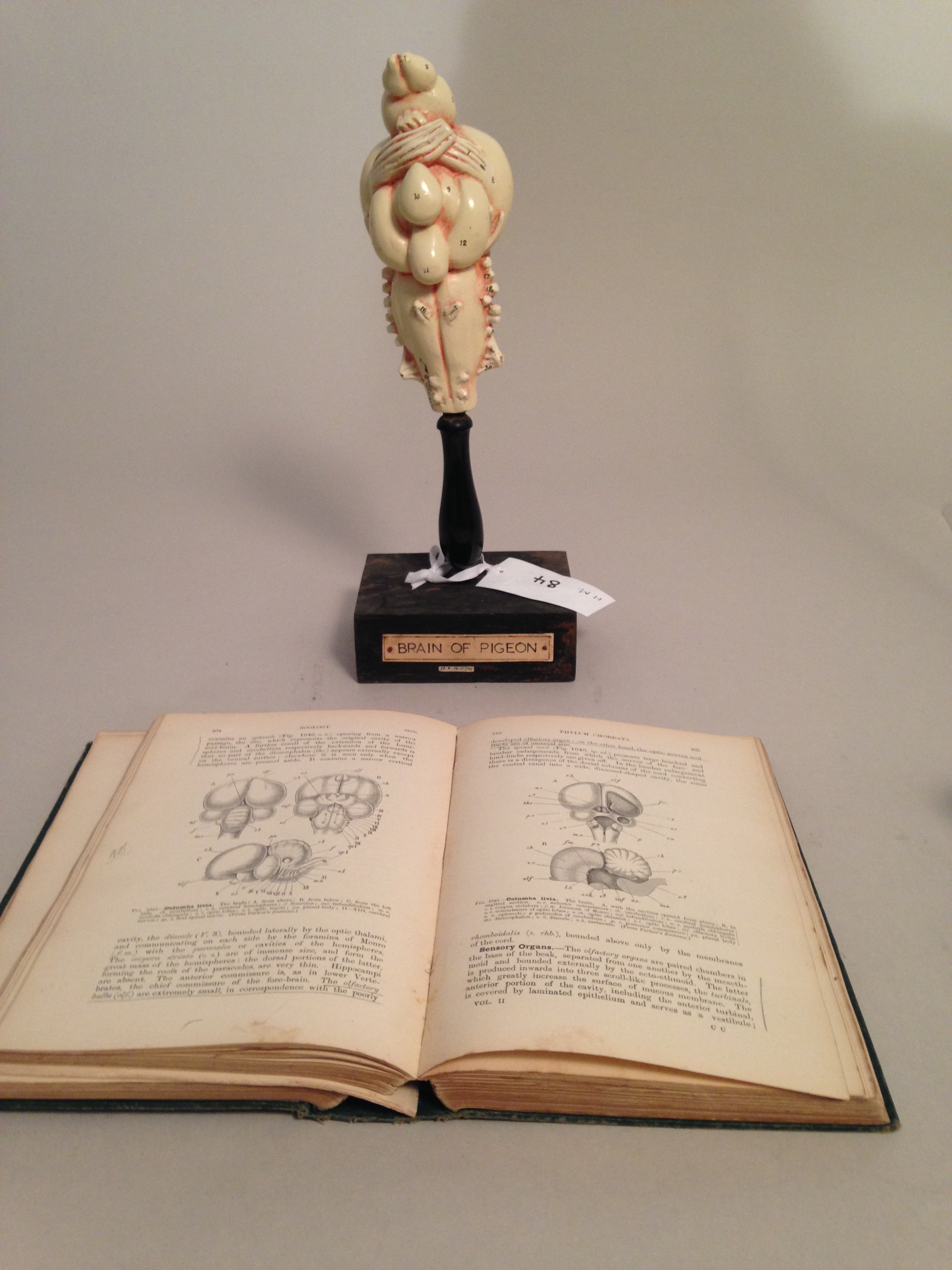By Marion McCann – 4.4.16
The digitisation process is not for the faint of heart. Amongst William Haswell’s vast zoological collection, are a series of animal brains, still preserved in glass jars with alcohol. Over the past couple of weeks the team has been working to have all these jars photographed, and while the flying fox brain with scalp and fur still attached has alarmed some, their value to budding zoologists is hard to ignore.
Haswell expressed interest in all areas of zoology, including the study of brains, and their difference between species. In 1884, he wrote an article for the New South Wales Linnean Society, about his study on the brain of the Gray’s Whale, recently acquired by the Australian Museum.[1] In the article he commented on the specimen’s ‘remarkable peculiarity’ when compared with the brain of a common dolphin, found of the coast of NSW.[2] Haswell was so impressed by the brain of the Gray’s Whale, that he went on the include a dorsal image of the brain in the second volume of his seminal work A Text-book of Zoology.[3] In today’s collection, we hold a preserved Gray’s Whale brain. Unfortunately, it is unclear whether it was acquired during Haswell’s time, but even if it was collected later, it is clear that he would have been delighted to have such a specimen in his collection.

Haswell Museum’s Greys Whale brain. This is possibly the very brain Haswell discussed in his Text-book of Zoology.
Amongst the brains preserved in alcohol, we have also uncovered a series of teaching models, designed to aid in the classroom, reminding us that the collection was foremost assembled for teaching zoology students. The model ‘Brain of the Pigeon’ directly links to Haswell’s own co-authored book A Text-Book of Zoology Vol. II in which he uses the common pigeon as an example of ‘Class V – Aves.’[4] In this he describes the way that the brains of birds differ from other Chordata, and the figures shown in the textbook feature the same numbering system as on the model, allowing the model and textbook to be used together to aid learning.

Model pigeon brain purchased by Haswell for his laboratory teaching and matching illustration drawn by Haswell for his zoology text-book
In a 1929 memoriam to Haswell, Linnean Society President H. J. Carter cited the Zoological Museum created by Haswell as one of his greatest legacies to the University of Sydney and its value as a ‘supplement to the oral and written work of his teaching.’[5] Through digitising, objects from the museum that are often unavailable for viewing by zoological students and the public, we hope that the legacy of Haswell’s Museum will continue to assist and inspire students for a long time to come. Even if that means photographing a whole lot of brains.
[1] W. A. Haswell, ‘On the brain of Grey’s whale (Kogia Grey),’ in Proceeding of the Linnean Society of New South Wales, Vol 8., 1884, 437 – 439.
[2] Haswell, op. cit., 438.
[3] T. Jeffrey Parker and William A. Haswell, A Text-book of Zoology, Vol II, Macmillan and Co., Limited, London, 1910, 580.
[4] Parker and Haswell, op. cit., 404 – 405.
[5] H. J., Carter, ‘William Aitcheson Haswell,’ in Proceedings of The Linnean Society of New South Wales, Vol 53., 1928, 488.

